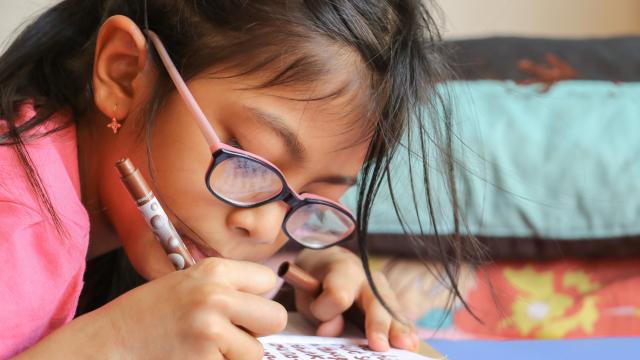I know, I know. You don’t even want to make resolutions for yourself let alone with your kids. If you approach it the right way, though, and when your kids are at the best ages (5-12 years old seems to be the sweet spot for starting this), you can set them up for good goal-setting habits in the future.
Plus, you want to be a good resolution role model, right? Setting the example for your kids might be the motivation you need to finally stick with your own.
Less ‘resolution,’ more ‘goal’
We like to call them “resolutions” this time of year, but a resolution without a plan is just asking for failure. Resolve to lose 9kg with no real roadmap to get there, and you’ll be back into the cookie jar by Jan. 5. But if you set a goal to live healthier with specific incremental changes, such as talking walks in the morning and choosing a few new healthy recipes to work into your regular meal plans, even small improvements can feel like victories.
It’s the same for kids. If they resolve simply to “listen better,” they’ll be tuning you out before the sun sets on 2018. New Year’s resolution time is a really just a good chance to talk to your kids about goal-setting and how good it feels to make a plan to improve on something that has been challenging for you.
Make it a family affair
Turn off the TV and gather around the dining room table. Come armed with your own goal/resolution, along with the steps you’ll take throughout the year to meet it. For example, if you have struggled to find enough time for yourself this year (um, all of us?), your resolution might be to carve out a couple of hours once a week to get away on your own. You can make a list of ideas: Meet a friend for coffee or lunch, wander through a used bookstore or take a walk through your favourite park. Ask your kids for any suggestions they have to help you meet your goal.
Then, ask them if they have a challenge they’d like to work on overcoming. If they don’t have any ideas, you can prompt them with broad suggestions, like school goals, behaviour goals, friend goals or goals for helping more around the house.
And then, listen. Jennifer Kolari, child therapist and author of Connected Parenting, told Parents.com that the parent’s agenda should not be the conversation-driver. Your kids may start with goals that are more “material goals,” such as collecting a certain type of toy. That’s ok!
“Don’t say, ‘That’s not a good goal,’” [Kolari] says. Be open to what’s important to them. “It’s a great way to have a meaningful conversation with your kids and see what they’re thinking.”
If individual resolutions seem too daunting for your kids, you could also come up with a family resolution. Talk about the time of day that is most challenging for your family. Maybe after-school homework time is always an argument waiting to happen, or maybe you just. cannot. get. out. the. door. in. the. morning. Identify a family challenge and talk about the steps each person can take to help ease the frustration.
Another option is to identify something you want to do more of together as a family in the coming year, such as a weekly game night, a monthly hike or a few new volunteer opportunities.
Keep it simple and positive
We’re not looking to overwhelm; two resolutions is plenty for a child. They should be fairly simple and you should ease into them with baby steps. Christine Carter, author of Raising Happiness: 10 Simple Steps for More Joyful Kids and Happier Parents, says it takes six weeks to create a habit.
For instance, if your child’s resolution is “I’m going to keep my room neater,” he should write down six tiny, easy steps and practice one each week. “The first week he puts his shoes in the closet, the second week he picks his pillow up off the floor, and so on,” Dr. Carter says. Your child might actually end up doing much more than this. “There’s a massive spillover effect,” she says. “Once people are engaged in their goal, they will do other things as well.”
You can download Dr. Carter’s habit tracker form to help kids fill in their resolutions and baby steps to reach them. Post resolutions on the refrigerator or a family bulletin board and revisit them periodically throughout the year.
As you check in during the year, if someone isn’t doing well with a particular resolution (and that someone might be you), there is no need to shame or punish. It’s an opportunity to brainstorm how to adjust the goal or the baby steps for better success. This helps kids learn that goals aren’t written in stone; they’re fluid and meant to be tweaked as necessary over time.

Comments